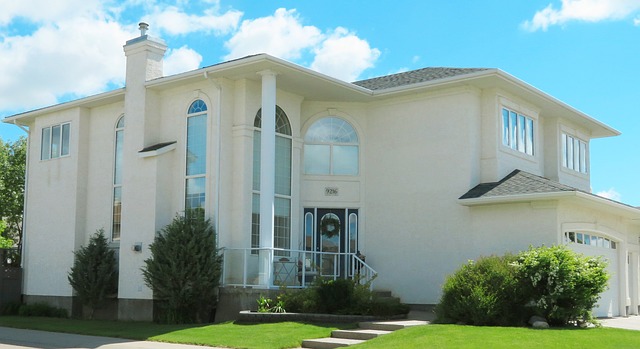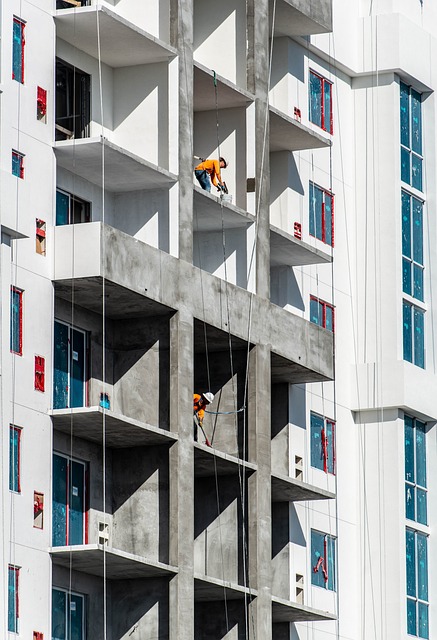Executive Condominium (EC) prices in Singapore have seen consistent growth since their introduction in 1995, bridging the gap between HDB flats and private condominiums. This evolution reflects a complex interplay of factors including population growth, economic health, government policies, location desirability, existing supply, infrastructure improvements, and regional market conditions. EC prices are influenced by factors such as accessibility to amenities, infrastructure developments, and overall market sentiment. Mature estates like Sengkang and Tampines have demonstrated more consistent price growth due to established infrastructure, while newer areas like Sembawang and Woodlands show potential for significant price increases once they mature. Government policies, including loan-to-value ratios, housing grants, and debt servicing ratio limits, have a significant impact on EC pricing patterns. The Housing & Development Board's (HDB) policies also play a key role in shaping these trends, with measures aimed at managing speculative activity or stimulating demand during economic downturns affecting price trajectories. Economic factors such as inflation and monetary policy influences, like interest rates, contribute to construction costs and mortgage rates, thus impacting demand and EC prices. Prospective investors and homebuyers must consider the full spectrum of these elements to understand Executive Condominium Price dynamics in Singapore's diverse property market.
Over the years, the trajectory of Executive Condominium (EC) prices in Singapore has been a subject of keen interest among homeowners, investors, and policymakers alike. This comprehensive article delves into the historical evolution of EC prices, examining the myriad factors that have influenced their appreciation over time. From government policies to economic dynamics, market supply and demand, and demographic shifts, each element has played a pivotal role in shaping the current landscape of EC pricing. We analyze trends across various regions, consider the impact of housing grants on affordability, and explore expert predictions for future price movements. Additionally, we delve into the effects of technological advancements, environmental sustainability initiatives, and legal changes on EC development and valuation. Through case studies, real-life buyer insights, and a comparative study against other property types in Singapore, this article offers a nuanced understanding of the factors driving Executive Condominium price appreciation over time.
- Historical Evolution of Executive Condominium Prices in Singapore
- Factors Influencing EC Price Appreciation
- Analysis of EC Price Trends Across Different Regions
- The Role of Government Policies in Shaping EC Prices
- Market Dynamics: Supply and Demand in Executive Condominiums
- Economic Factors Impacting EC Pricing
Historical Evolution of Executive Condominium Prices in Singapore

Over the years, the prices of Executive Condominiums (ECs) in Singapore have demonstrated a dynamic trajectory shaped by various economic and demographic factors. The introduction of ECs as a housing option in 1995 marked a significant evolution in the public-private housing landscape. Initially positioned as a hybrid between HDB flats and private condominiums, these units catered to couples who could afford slightly more than an HDB flat but did not wish to enter the private property market immediately. The prices of ECs were competitive with both resale HDB flats and smaller private condominium units at their point of introduction.
Subsequent years have seen a consistent appreciation in the prices of ECs, reflecting broader trends in Singapore’s property market. This growth can be attributed to a combination of factors including population growth, limited land space for new developments, and sustained demand from both upgraders and first-time homeowners. The introduction of policies such as the enhancement of the CPF Housing Grant and the resale price limit have also influenced the EC market, making these units more accessible to middle-income families. As a result, the historical evolution of Executive Condominium prices in Singapore shows a pattern of steady growth, with periods of rapid appreciation punctuated by policy adjustments and economic cycles. This trend underscores the stability and investment potential of ECs as a housing option within the diverse Singaporean property market.
Factors Influencing EC Price Appreciation

The trajectory of Executive Condominium (EC) prices is a complex interplay of various factors that can influence their appreciation over time. Market demand, influenced by population growth and shifts in demographic preferences, plays a pivotal role in shaping EC prices. As families grow or new residents enter the housing market, the need for larger or additional units within EC developments can drive up prices. Economic conditions also exert significant pressure on EC prices; robust economic growth, coupled with low-interest rates, tends to increase property demand and, consequently, prices. Furthermore, government policies aimed at curbing inflation or cooling a heated real estate market can affect EC price trends, with measures such as loan curbs and additional buyer’s stamp duties potentially dampening price appreciation.
Location is another critical determinant of EC price movements. Prime locations with easy access to public transportation, reputable schools, and amenities often see higher demand, leading to increased prices. Additionally, the state of the property market, including supply levels and the condition of the properties themselves, can influence price trends. Renovations or redevelopment in popular EC areas can either boost prices due to enhanced living conditions or keep them stable if new units are introduced to meet demand. Investors and buyers must consider these multifaceted factors when assessing the potential for Executive Condominium Price appreciation over time.
Analysis of EC Price Trends Across Different Regions

The trajectory of Executive Condominium (EC) prices has been subject to regional disparities, reflecting the varied economic landscapes and demand dynamics across Singapore. A comprehensive analysis of EC price trends reveals that pricing can be influenced by a multitude of factors, including geographical location, proximity to amenities, infrastructure developments, and the overall property market sentiment. For instance, ECs situated in mature estates such as Sengkang or Tampines have historically seen more stable price growth compared to those in emerging regions like Sembawang or Woodlands. This can be attributed to the established infrastructure and a proven track record of demand in these areas. Conversely, newer towns often witness a surge in prices once they become fully developed and offer an array of amenities that align with the evolving preferences of homeowners. The disparity in price appreciation underscores the importance of considering regional market conditions when assessing the potential investment value of Executive Condominiums in Singapore. Investors and potential residents alike must scrutinize ec prices by region to make informed decisions, as the property market’s dynamics are not uniform across all areas within the city-state.
The Role of Government Policies in Shaping EC Prices

The trajectory of Executive Condominium (EC) prices is intricately linked to a spectrum of government policies, which have been both reactive and proactive in nature. These policies, designed to ensure a balanced property market that caters to the needs of various income groups, play a pivotal role in shaping the affordability and desirability of ECs as housing options. Over time, initiatives such as loan-to-value ratio adjustments, grant eligibility for first-time homeowners, and total debt servicing ratio guidelines have all influenced the pricing dynamics of ECs. The Housing & Development Board (HDB) has been instrumental in guiding these market conditions, with its policies often setting the stage for price trends. For instance, measures to curb speculative demand or to stimulate the housing market during economic downturns have directly impacted EC prices. As a result, stakeholders in the property sector closely monitor government policy shifts, as they can lead to significant fluctuations in EC pricing, reflecting the government’s commitment to maintaining an affordable and sustainable living environment for Singaporeans at different stages of their lives.
Market Dynamics: Supply and Demand in Executive Condominiums

The dynamics of Executive Condominium (EC) prices are inherently linked to the interplay of supply and demand within the Singaporean real estate market. As new EC projects come onto the market, the availability of these units affects the supply side, influencing price trends. Developers, often guided by government release schedules, release ECs at varying intervals, which can lead to fluctuations in supply that, in turn, impact pricing. On the demand front, factors such as population growth, income levels, and the general economic climate play pivotal roles. A growing population with increasing purchasing power typically boosts demand for housing, including ECs, which can drive up prices as buyers compete for limited available units. Conversely, economic downturns or changes in government policies that affect the eligibility criteria for purchasing an EC can dampen demand and result in a softening of prices. Investors and homebuyers alike monitor these supply-demand shifts closely, as they directly influence Executive Condominium Price Appreciation Over Time, making it a critical aspect of market analysis for anyone interested in the sector. The nuances of this relationship must be understood to forecast potential price movements accurately, which is essential for stakeholders looking to buy or sell EC units within Singapore’s vibrant property landscape.
Economic Factors Impacting EC Pricing

The pricing of Executive Condominiums (ECs) is influenced by a myriad of economic factors that evolve over time. These include macroeconomic trends such as inflation rates, which can affect the cost of construction and maintenance, thus impacting the overall price of EC units. Interest rates set by monetary authorities play a crucial role in determining mortgage rates, thereby influencing buyers’ purchasing power and demand for these housing types. The economic climate also encompasses the broader real estate market dynamics, where supply and demand balances significantly affect EC prices. Factors such as population growth, urbanization trends, and government policies on land use and housing incentives can all shape the availability and desirability of ECs, consequently influencing their price points. Additionally, geopolitical events and global economic conditions can lead to shifts in investment patterns, affecting the real estate market and, by extension, the pricing of Executive Condominiums. Investors and homebuyers alike must consider these economic undercurrents when evaluating EC Price Appreciation Over Time, as they are pivotal in understanding the trajectory of prices for these housing units.
Over time, the trajectory of Executive Condominium (EC) prices in Singapore has been shaped by a multitude of factors including historical trends, government policies, regional differences, and broader economic conditions. As explored in this article, the evolution of EC prices reflects a dynamic interplay between supply and demand, with various policy measures playing a pivotal role in shaping the market landscape. Investors and homeowners alike can appreciate the depth of insight provided into how these elements contribute to price appreciation over the years. Prospective buyers are encouraged to stay informed about ongoing trends and government initiatives to make well-considered decisions regarding EC investments. With careful analysis, it becomes evident that understanding the intricacies of the market is key to capitalizing on the growth potential of Executive Condominium prices in Singapore.



